Home>diy>Building & Construction>How To Reduce Construction Dust
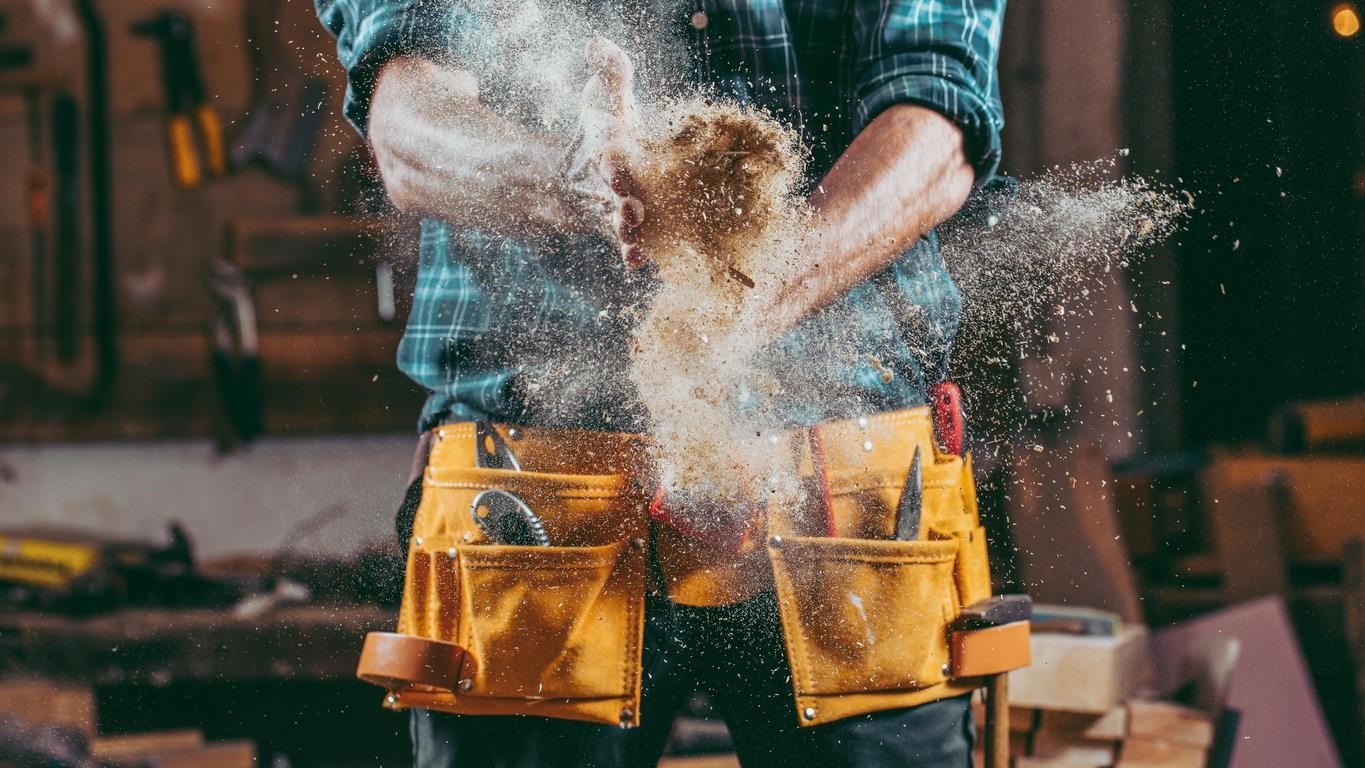

Building & Construction
How To Reduce Construction Dust
Modified: December 7, 2023
Learn effective methods and techniques to minimize dust during building construction. Reduce health hazards and keep your construction site clean with our expert guide.
(Many of the links in this article redirect to a specific reviewed product. Your purchase of these products through affiliate links helps to generate commission for Storables.com, at no extra cost. Learn more)
Introduction
Welcome to our comprehensive guide on how to reduce construction dust. If you are involved in the construction industry, you are likely aware of the challenges posed by dust on construction sites. Construction dust can cause numerous health problems, damage machinery and equipment, and create environmental concerns. In this article, we will explain why construction dust is a problem and provide practical guidelines and effective methods for reducing dust on construction sites.
Construction dust is generated during various construction activities such as cutting, drilling, grinding, and excavating materials like concrete, wood, and stone. It consists of particles that are small enough to be inhaled by workers and nearby residents. These particles can be made up of silica, asbestos, heavy metals, and other harmful substances, posing serious health risks to those exposed.
Construction dust not only affects the workers directly involved in the construction process, but it can also impact the surrounding community. It can spread through the air and settle on surfaces, making it difficult to avoid inhalation or ingestion. Additionally, construction dust can contribute to air pollution and may breach environmental regulations.
To address these concerns, regulatory bodies and industry associations have established guidelines and regulations for controlling and reducing construction dust. By implementing these measures, construction companies can safeguard the health of their workers and mitigate the negative impacts of dust on the environment.
In the following sections, we will explore the health risks associated with construction dust, delve into the regulations and guidelines for reducing dust, and provide practical methods and techniques for effective dust control on construction sites. By implementing these strategies, you can create a safe and healthy working environment, alleviate health risks, and comply with regulatory requirements.
So, let’s dive into the details and learn how to effectively reduce construction dust for a cleaner and healthier construction site.
Key Takeaways:
- Construction dust poses serious health risks, equipment damage, and environmental impact. Implementing effective dust control measures is crucial to safeguard workers’ health, ensure project efficiency, and promote environmental sustainability.
- Utilizing a combination of methods such as water-based dust suppression, proper site management, engineering controls, PPE, and regular cleaning can significantly reduce construction dust. A proactive approach and adherence to regulations are essential for creating safer and healthier construction sites.
Read more: How To Reduce Construction Cost
Why is Construction Dust a Problem?
Construction dust poses several challenges and problems for construction sites and the people working on them. Understanding why construction dust is a problem is crucial to implementing effective dust control measures. Here are some key reasons why construction dust is a significant concern:
- Health Risks: Construction dust contains hazardous substances such as silica, asbestos, and heavy metals. When inhaled, these particles can enter the respiratory system, leading to various health issues. Prolonged exposure to construction dust can cause respiratory problems, including chronic bronchitis, asthma, and even lung cancer.
- Worker Safety: The presence of excessive dust on construction sites can impair worker visibility and lead to accidents. Dust particles can reduce visibility, making it difficult for workers to see hazards or properly operate machinery. This can increase the risk of tripping, falling, or getting injured by heavy equipment.
- Equipment Damage: Construction dust can infiltrate and accumulate in machinery and equipment, causing damage or malfunction. Dust particles can clog filters, impair moving parts, and corrode sensitive components, leading to decreased efficiency, increased maintenance costs, and potentially costly repairs or replacements.
- Project Delays: Excessive dust can hinder construction progress and lead to project delays. Dust accumulation can make it challenging to perform tasks efficiently, as workers may need to constantly clean or remove dust. In extreme cases, dust-related issues may require work stoppages to address health and safety concerns.
- Environmental Impact: Construction dust can contribute to air pollution and have negative impacts on the environment. Dust particles can disperse into the air and settle on surfaces, potentially contaminating water bodies, nearby vegetation, and wildlife habitats. This can disrupt ecosystems and violate environmental regulations.
Given the significant health risks, potential damage to equipment, and impact on project timelines and the environment, it is essential to address and minimize construction dust on construction sites. By implementing appropriate dust control measures, construction companies can create a safer working environment, protect workers’ health, extend the lifespan of machinery, and promote environmental sustainability.
Health Risks Associated with Construction Dust
Construction dust poses a range of health risks to workers and individuals in the vicinity of construction sites. The composition of construction dust varies depending on the materials used, but it often contains hazardous substances that can have detrimental effects on human health. Here are some of the primary health risks associated with construction dust:
- Respiratory Problems: Inhaling construction dust can lead to various respiratory issues. Silica dust, which is commonly found in materials such as concrete, stone, and sand, can cause a serious lung disease called silicosis. Prolonged exposure to silica dust can lead to scarring of lung tissue, making it difficult to breathe properly. Furthermore, construction dust can trigger or worsen respiratory conditions such as asthma, bronchitis, and chronic obstructive pulmonary disease (COPD).
- Lung Cancer: Certain components of construction dust, such as asbestos and heavy metals like lead and cadmium, are classified as human carcinogens. Prolonged exposure to these substances increases the risk of developing lung cancer. Asbestos, in particular, has been linked to various types of cancer, including mesothelioma, a rare but aggressive cancer that affects the lining of the lungs and other organs.
- Eye and Skin Irritation: Construction dust particles can cause irritation to the eyes and skin upon contact. Fine dust particles can cause redness, itching, and discomfort in the eyes, while prolonged exposure to dust can result in dermatitis or other skin conditions. It is important for workers to wear appropriate personal protective equipment (PPE), such as safety goggles and gloves, to reduce the risk of eye and skin irritation.
- Allergies and Sensitization: Construction dust may contain allergens that can trigger allergic reactions in susceptible individuals. Dust from materials like wood, cement, and metals can cause allergic rhinitis, characterized by symptoms such as sneezing, runny nose, and itchy eyes. In some cases, repeated exposure to particular substances can lead to sensitization, where the immune system becomes hypersensitive and reacts strongly upon subsequent exposures.
- Cardiovascular Effects: Emerging research suggests that exposure to construction dust, particularly fine particles known as PM2.5, may increase the risk of cardiovascular problems. PM2.5 particles can enter the bloodstream through the respiratory system, potentially leading to heart attacks, strokes, and other cardiovascular diseases.
It is essential for construction workers and employers to recognize the health risks associated with construction dust and take appropriate measures to mitigate exposure. This includes implementing dust control methods, providing suitable respiratory protection, conducting regular health monitoring, and raising awareness about the importance of dust management on construction sites.
Regulations and Guidelines for Reducing Construction Dust
To promote a safe and healthy working environment, regulatory bodies and industry associations have established regulations and guidelines for controlling and reducing construction dust. These regulations serve as a framework to ensure that construction companies implement effective dust control measures and protect the health of workers and the surrounding community. Here are some key regulations and guidelines to follow:
- Occupational Safety and Health Administration (OSHA): In the United States, OSHA sets standards and regulations to protect workers from occupational hazards, including exposure to construction dust. OSHA’s Respirable Crystalline Silica Standard, for example, mandates specific control measures for activities involving silica dust, such as implementing engineering controls, providing respiratory protection, and conducting regular monitoring. Compliance with OSHA regulations is essential to maintain a safe and healthy work environment.
- Control of Substances Hazardous to Health (COSHH): In the United Kingdom, the COSHH regulations require employers to assess and control hazardous substances, including construction dust. Under COSHH, employers must identify the risks associated with construction dust, implement suitable control measures, provide adequate information and training to workers, and conduct regular monitoring to ensure compliance.
- Construction Industry Safety Regulations: Many countries have specific safety regulations tailored to the construction industry. These regulations often include requirements for dust control. Construction companies must familiarize themselves with the relevant regulations in their jurisdiction and ensure compliance with specific dust control measures stipulated in these regulations.
- Industry Best Practices and Guidelines: Various industry associations and organizations provide guidelines and best practices for reducing construction dust. These resources offer practical advice on dust control methods, proper equipment usage, and worker protection. Examples include the Construction Dust Partnership in the UK, which provides guidance on managing dust risks, and guidelines like the American Industrial Hygiene Association’s White Paper on Construction Dust Control Measures.
It is crucial for construction companies to stay updated and informed about the regulations and guidelines applicable to their region. By adhering to these standards, construction companies can ensure the implementation of effective dust control measures, protect the health and well-being of workers, and avoid penalties or legal repercussions.
Next, we will explore various dust control methods and techniques that can be employed on construction sites to effectively reduce construction dust.
Effective Dust Control Methods for Construction Sites
Reducing and controlling dust on construction sites requires a combination of proactive measures and effective dust control methods. Implementing these methods not only protects the health of workers but also helps maintain a cleaner and safer working environment. Here are some effective dust control methods for construction sites:
- Using Water for Dust Suppression: One of the most common and effective methods is water-based dust suppression. Water can be applied to construction materials, such as concrete and soil, to minimize dust generation. This can be done using methods like wetting down surfaces, using sprinkler systems, or misting the air with water to reduce airborne dust particles.
- Minimizing Dust Generation through Proper Site Management: Good site management practices can also play a significant role in dust control. Minimize the use of heavy machinery in dry and windy conditions, and schedule dusty tasks for times when weather conditions are less favorable for dust dispersion. Implement proper waste management practices to prevent the spread of dust during material handling and disposal.
- Implementing Engineering Controls to Reduce Dust: Engineering controls involve modifying equipment and processes to minimize dust generation. This can include using dust collection systems, such as local exhaust ventilation (LEV) systems, to capture dust at the source. Employing dust collectors and filtration systems on equipment, such as saws and grinders, can also help reduce dust emissions.
- Using Personal Protective Equipment (PPE) for Dust Protection: When other control methods are not sufficient or feasible, providing workers with appropriate personal protective equipment (PPE) is essential. Respiratory protection, such as dust masks or respirators, should be provided to workers to prevent inhalation of dust particles. Additionally, workers should wear goggles, gloves, and protective clothing to reduce skin and eye exposure to dust.
- Regular Cleaning and Maintenance to Control Dust: Regularly cleaning and maintaining the construction site can help control dust buildup. Sweeping, vacuuming, or using industrial cleaning equipment can remove accumulated dust on surfaces and prevent it from becoming airborne. Avoid dry sweeping methods, as they can disperse dust particles into the air. Instead, use wet methods that involve dampening the dust before cleaning.
Remember, no single method can eliminate dust entirely, but a combination of these dust control methods can significantly reduce dust levels on construction sites. It is important to assess the specific needs of each construction project and tailor the dust control measures accordingly.
By implementing these effective dust control methods, construction companies can create a healthier and safer work environment, minimize environmental impacts, and ensure compliance with regulatory requirements.
Read more: How To Reduce Construction Noise
Using Water for Dust Suppression
Water is a versatile and effective tool for dust suppression on construction sites. It can be employed in various ways to reduce dust generation and minimize the health risks associated with construction dust. Here are some key methods for using water to suppress dust:
- Wetting Down Surfaces: One of the simplest and most common methods is wetting down surfaces to prevent dust from becoming airborne. This can be done by using water hoses, sprinklers, or pressure washers to spray a fine mist of water onto dusty surfaces. Wetting down surfaces before and during construction activities can help weigh down dust particles and keep them from becoming airborne.
- Misting the Air: Another effective method is misting the air with water to reduce airborne dust particles. This can be accomplished through the use of misting systems or fogging equipment that atomize water into tiny droplets. These droplets help capture and remove dust particles from the air, effectively reducing dust concentrations in the immediate vicinity.
- Soil Stabilization: Water can be used to stabilize soils and prevent the generation of dust from loose soil. By moistening the soil before excavation or earthmoving activities, water helps bind the soil particles together, reducing their susceptibility to becoming airborne. Soil stabilization is particularly important in arid and windy conditions where dust generation is more likely.
- Dust Suppression Systems: Advanced dust suppression systems can be installed to provide targeted dust control in specific areas or during high dust-producing activities. These systems often involve a combination of water sprays, nozzles, and exhaust ventilation to capture and control dust emissions. Dust suppression systems can be customized based on the site layout and specific dust control requirements.
- Water Trucks: Water trucks, equipped with large tanks and spray bars, are commonly used on construction sites to provide mobile dust suppression. These trucks spray water onto surfaces or in the air to reduce dust levels quickly and efficiently, especially in areas where a permanent water supply is not available. Water trucks are particularly effective for controlling dust on unpaved roads, haulage routes, and material stockpiles.
When using water for dust suppression, it is important to consider the amount and frequency of water application. Over-watering can lead to excess mud and slippery surfaces, which may create new safety risks. It is crucial to strike the right balance to effectively suppress dust without compromising the overall safety and functionality of the construction site.
In addition to using water, it is also important to ensure proper water management on construction sites. This includes collecting and reusing water whenever possible, preventing water run-off and soil erosion, and complying with local water conservation regulations.
By utilizing water for dust suppression, construction companies can significantly reduce dust levels, protect the health of workers and nearby residents, and improve overall site safety and cleanliness.
To reduce construction dust, use water to dampen the work area, use dust control products, and provide proper ventilation. Regularly clean up dust and debris to minimize its spread.
Minimizing Dust Generation through Proper Site Management
Proper site management plays a crucial role in minimizing dust generation on construction sites. By implementing effective practices and strategies, construction companies can significantly reduce the amount of dust produced and ensure a safer and cleaner work environment. Here are some key considerations for minimizing dust generation through proper site management:
- Weather Conditions: Take into account weather conditions when planning construction activities. Dry and windy conditions can exacerbate dust generation. Whenever possible, schedule dusty tasks for times when weather conditions are less conducive to dust dispersion, such as during periods of lower wind speeds or higher humidity levels.
- Moisturizing Materials: Moisturizing construction materials helps prevent dust from becoming airborne. Before cutting, drilling, or grinding materials like concrete or stone, lightly dampen them to minimize dust generation. This can be done by spraying a fine mist of water onto the surface or using damp rags or sponges to moisten the materials.
- Waste Management: Proper waste management is crucial for controlling dust on construction sites. Dust can easily become airborne during the handling and disposal of construction waste. Implement procedures for containment and disposal of waste to prevent the spread of dust. Use covered containers or plastic wraps to confine dusty materials and transport them to designated waste areas in a controlled manner.
- Material Handling Techniques: Minimize dust generation during material handling activities. Use enclosed chutes or conveyors to transfer materials, reducing the chances of dust becoming airborne. Employ vacuum-assist tools or dust collection systems on equipment, such as saws and drills, to capture dust at the source and prevent it from dispersing into the air.
- Dust Control Training: Provide comprehensive training and education to workers regarding dust control practices. Ensure that workers are aware of the health risks associated with construction dust and the importance of implementing proper dust control measures. Train them on techniques for minimizing dust generation, such as the appropriate use of water, the correct handling of materials, and the maintenance of dust control equipment.
Regular communication and collaboration among project managers, supervisors, and workers are crucial for effective site management. Encourage open dialogue and feedback about dust control measures to identify areas for improvement and address any challenges or concerns that may arise.
Furthermore, conducting regular site inspections and audits can help identify potential sources of dust generation and ensure compliance with dust control protocols. Monitoring dust levels and conducting air quality testing can also provide valuable insights into the effectiveness of dust control measures and help identify areas that require further attention.
By implementing proper site management practices, construction companies can minimize dust generation, create a safer work environment, and mitigate the risks associated with construction dust for both workers and the surrounding community.
Implementing Engineering Controls to Reduce Dust
Implementing engineering controls is an effective approach to reduce dust on construction sites. These controls involve modifying equipment and processes to minimize dust generation at the source, thereby protecting workers and mitigating the risks associated with construction dust. Here are some key engineering controls that can be implemented to reduce dust:
- Dust Collection Systems: Install dust collection systems, such as local exhaust ventilation (LEV), to capture and control dust at the point of generation. LEV systems consist of hoods or enclosures that capture dust directly from equipment, along with a ventilation system that draws the dust-laden air into filters or collectors. The collected dust is then removed or contained, preventing it from becoming airborne.
- Equipment Modifications: Retrofit equipment and machinery with modifications or attachments that minimize dust emissions. For example, dust shrouds or covers can be installed on tools and equipment, such as grinders or saws, to capture dust close to the source. These modifications help contain the dust and prevent it from dispersing into the surrounding air.
- Ventilation Improvements: Enhance ventilation systems to improve air circulation and control dust dispersion. Properly designed ventilation systems can help redirect and remove airborne dust particles, reducing their concentration in work areas. This can be achieved through the use of exhaust fans, air filtration units, or strategic positioning of vents or openings to create a negative pressure zone that draws dust away from workers.
- Enclosures and Barriers: Create physical enclosures or barriers around dust-generating processes to contain the dust. By isolating the work area, the chance of dust spreading to other parts of the construction site is reduced. This can be done using temporary enclosures, plastic sheeting, or containment systems tailored to the specific activities and processes that generate dust.
- Mechanical Dust Suppression Systems: Utilize mechanical dust suppression systems to suppress dust emissions during specific activities. Equipment such as water sprayers, foggers, or misting systems can be strategically placed to control dust generated by high-impact activities like demolition or crushing. These systems release a fine mist of water or a dust suppressant, which suppresses dust particles and prevents their dispersion.
Implementing engineering controls requires careful planning, expertise, and knowledge of the specific hazards and operations involved. It is crucial to consult with qualified engineers or professionals who specialize in dust control to design and implement the most suitable engineering controls for the construction site.
Regular inspection, maintenance, and testing of engineering controls are essential to ensure their effectiveness and continued performance. Monitoring and adjusting control systems, replacing filters, and conducting air sampling and analysis will help verify that dust exposures remain within acceptable limits and that controls are functioning optimally.
By implementing effective engineering controls, construction companies can significantly reduce dust levels, protect workers’ health, and create a safer and more productive work environment.
Using Personal Protective Equipment (PPE) for Dust Protection
Personal Protective Equipment (PPE) is an essential component of a comprehensive approach to dust control on construction sites. It provides an additional layer of protection for workers by minimizing their exposure to dust particles that may be present in the air. When other control measures are not feasible or sufficient, the use of appropriate PPE becomes crucial. Here are some key considerations for using PPE to protect against dust:
- Respiratory Protection: Respiratory protection is particularly important when working in environments with high levels of dust. Depending on the nature and concentration of dust, workers may need to wear respirators or dust masks. NIOSH-approved respirators should be selected based on the specific hazards and exposure levels encountered on-site. Fit testing and proper training on donning, doffing, and maintenance of respirators are vital to ensure their effectiveness.
- Eye Protection: Dust particles can irritate or cause damage to the eyes. Safety goggles or safety glasses with side shields should be worn to protect the eyes from airborne dust. These protective eyewear items should fit properly and provide sufficient coverage to prevent dust from entering the eyes. Regular cleaning and maintenance of eye protection gear are essential to ensure clear vision and optimal protection.
- Skin Protection: Dust particles can also cause skin irritation or dermatitis upon contact. Wearing long-sleeved clothing, gloves, and suitable work boots can help protect the skin. When working with hazardous dust materials such as chemicals or allergens, it may be necessary to use specialized protective clothing, such as coveralls or chemical-resistant gloves, to provide additional safeguarding against dust-related skin concerns.
- Training and Education: Proper training and education on PPE usage, care, and limitations are crucial. Workers should be trained to understand the importance of using PPE and how to properly select, wear, and maintain the equipment. Regular refreshers and updates on PPE usage ensure that workers are aware of the latest guidelines and best practices.
- Ensuring Accessibility and Fit: Employers must ensure that appropriate PPE is readily available to workers and that it fits properly. Different tasks and job roles may require specific types of PPE. It is essential to perform assessments to identify the appropriate types and sizes of PPE required for each worker. Regular checks and inspections should be conducted to ensure PPE is in good condition and replaced as needed.
It is important to note that while PPE provides protection against dust exposure, it is considered the last line of defense. Other control measures, such as engineering controls and dust suppression methods, should be prioritized to minimize dust generation and exposure. PPE should be used in conjunction with these measures to provide comprehensive protection.
Building a strong safety culture and promoting a proactive approach to dust control are essential for ensuring the effective use of PPE. Open communication, regular training, and ongoing monitoring of dust levels and exposure risks will help maintain a safe and healthy working environment for all construction site personnel.
Regular Cleaning and Maintenance to Control Dust
Regular cleaning and maintenance play a crucial role in controlling dust on construction sites. Dust can accumulate on surfaces, equipment, and machinery, leading to increased airborne dust and potential health hazards. By implementing proper cleaning and maintenance practices, construction companies can effectively reduce dust levels and maintain a cleaner and safer work environment. Here are some key considerations for regular cleaning and maintenance:
- Sweeping and Vacuuming: Regularly sweep and vacuum work areas, walkways, and other surfaces to remove accumulated dust. Use vacuum systems equipped with high-efficiency particulate air (HEPA) filters to effectively capture and contain fine dust particles, ensuring they do not become airborne again. Avoid dry sweeping methods as they can disperse dust into the air.
- Cleaning Equipment and Tools: Clean dust and debris from equipment, tools, and machinery regularly, especially those that generate or come into contact with dust. This includes cleaning filters, exhaust vents, and intake areas of equipment to maintain optimal performance and prevent dust from recirculating. Follow manufacturer guidelines for proper cleaning and maintenance procedures.
- Dust Control Equipment Maintenance: Perform regular maintenance on dust control equipment, such as dust collectors, exhaust systems, and ventilation systems. Inspect and clean filters, check for leaks or damages, and ensure proper operation. Promptly address any issues or malfunctions to maintain the effectiveness of these systems in capturing and controlling dust.
- Materials Storage and Organization: Properly store and organize materials to minimize dust accumulation. Keep materials covered or sealed in appropriate containers to prevent dust from settling on the surfaces. Arrange materials and equipment in a way that allows for efficient cleaning and maintenance and minimizes potential dust traps.
- Dispose of Dust Properly: Ensure proper disposal of dust collected during cleaning activities. Use sealed containers or bags to contain and properly dispose of dust and debris to prevent recontamination. This includes following local regulations and guidelines for hazardous material disposal when dealing with potentially hazardous dust.
Moreover, establishing a routine cleaning schedule and assigning designated personnel or teams to carry out cleaning and maintenance tasks will help ensure consistency and accountability. Regular inspections can also be conducted to assess the effectiveness of cleaning and maintenance efforts and identify areas that may require additional attention.
Additionally, encourage workers to maintain cleanliness in their work areas by adopting good housekeeping practices. This includes promptly cleaning up spills, minimizing clutter, and maintaining proper storage of personal belongings to reduce potential dust sources.
By implementing regular cleaning and maintenance practices, construction companies can effectively control dust levels, reduce the risk of airborne dust exposure, and create a safer and healthier working environment for all employees.
Conclusion
Construction dust is a significant problem that can pose health risks, damage equipment, delay projects, and harm the environment. However, with proper knowledge and implementation of dust control measures, construction companies can effectively mitigate these issues and create safer and healthier construction sites.
In this comprehensive guide, we have explored the various aspects of reducing construction dust. We started by understanding why construction dust is a problem, highlighting the health risks it poses to workers and the surrounding community. We then delved into the regulations and guidelines established by regulatory bodies to ensure effective dust control and compliance in construction activities.
We have discussed a range of effective dust control methods, including using water for dust suppression, minimizing dust generation through proper site management, implementing engineering controls, utilizing personal protective equipment (PPE), and emphasizing regular cleaning and maintenance. Each of these methods has its role in reducing dust and protecting workers’ health.
It is important to emphasize that no single method can completely eliminate dust hazards. Instead, a combination of these approaches tailored to the specific site conditions, activities, and materials being used is key to achieving effective dust control.
Furthermore, fostering a strong safety culture, providing regular training, and maintaining open communication are essential for successful dust control efforts. Regular monitoring, inspections, and adjustments of control systems will help ensure sustained effectiveness in reducing dust levels.
Ultimately, by implementing proper dust control measures, construction companies can significantly reduce health risks for workers, prolong the lifespan of equipment, enhance productivity and project efficiency, and minimize the impact of their activities on the environment. An investment in dust control is an investment in the safety, well-being, and success of construction projects.
Let us all work together to create cleaner, healthier, and safer construction sites by reducing construction dust.
Frequently Asked Questions about How To Reduce Construction Dust
Was this page helpful?
At Storables.com, we guarantee accurate and reliable information. Our content, validated by Expert Board Contributors, is crafted following stringent Editorial Policies. We're committed to providing you with well-researched, expert-backed insights for all your informational needs.
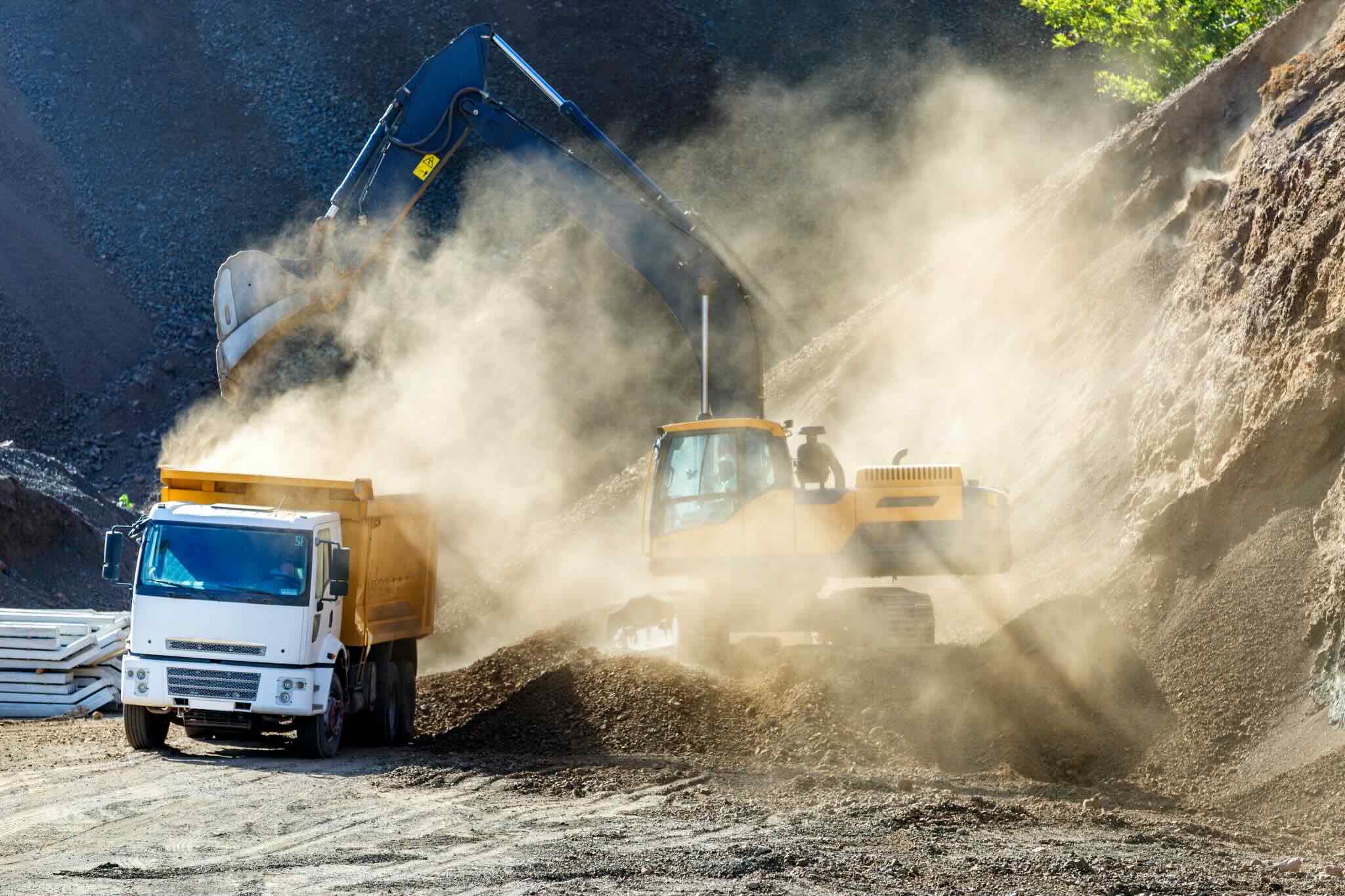
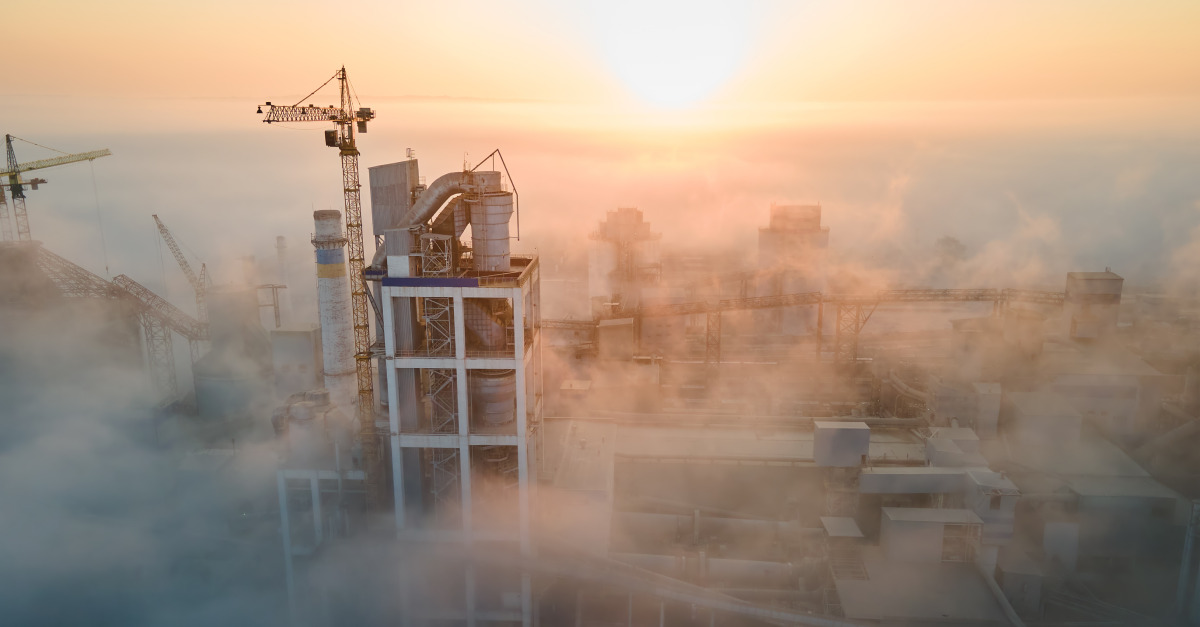
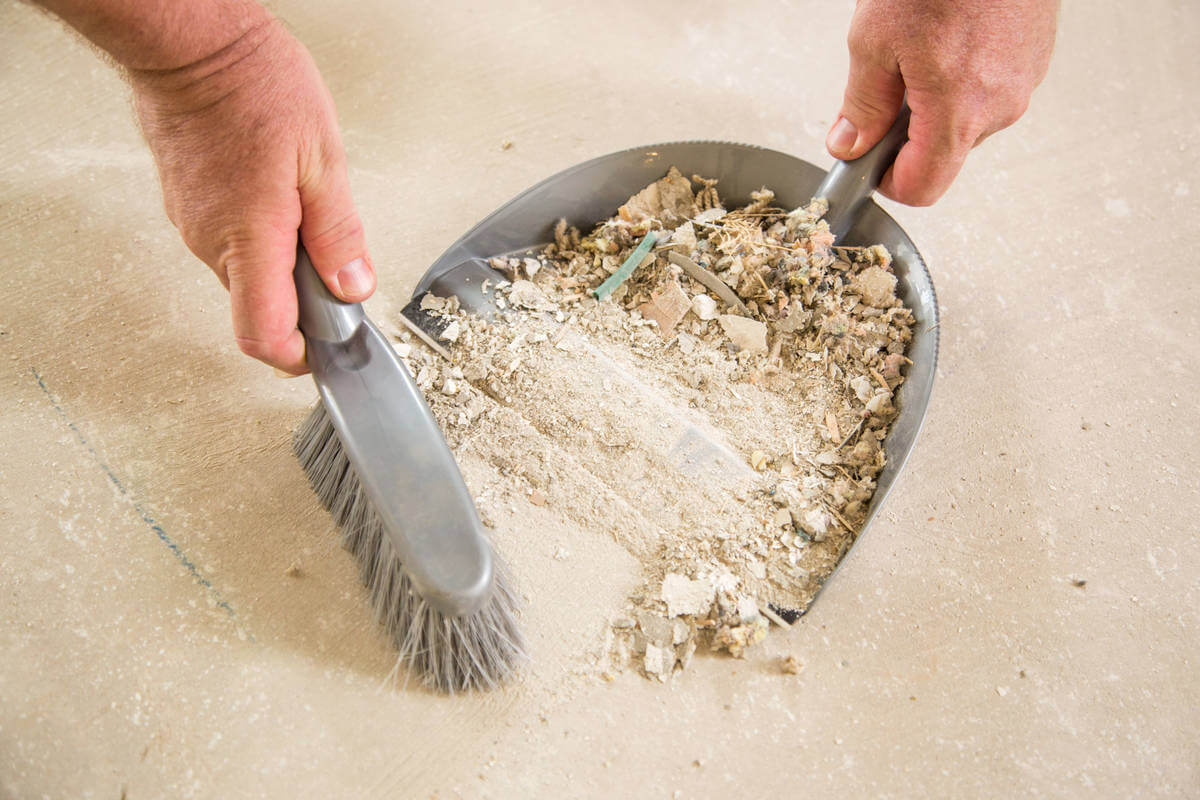






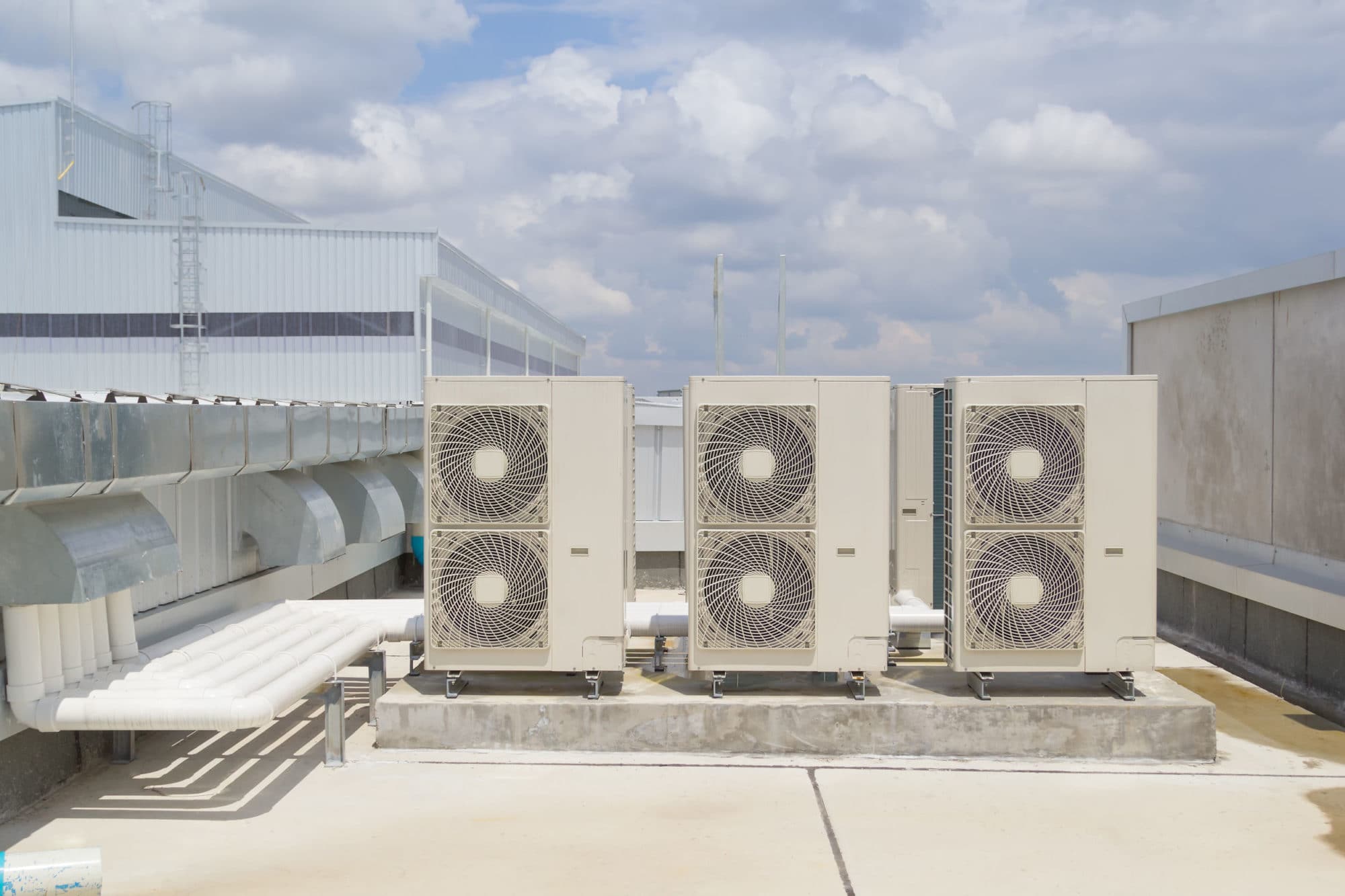

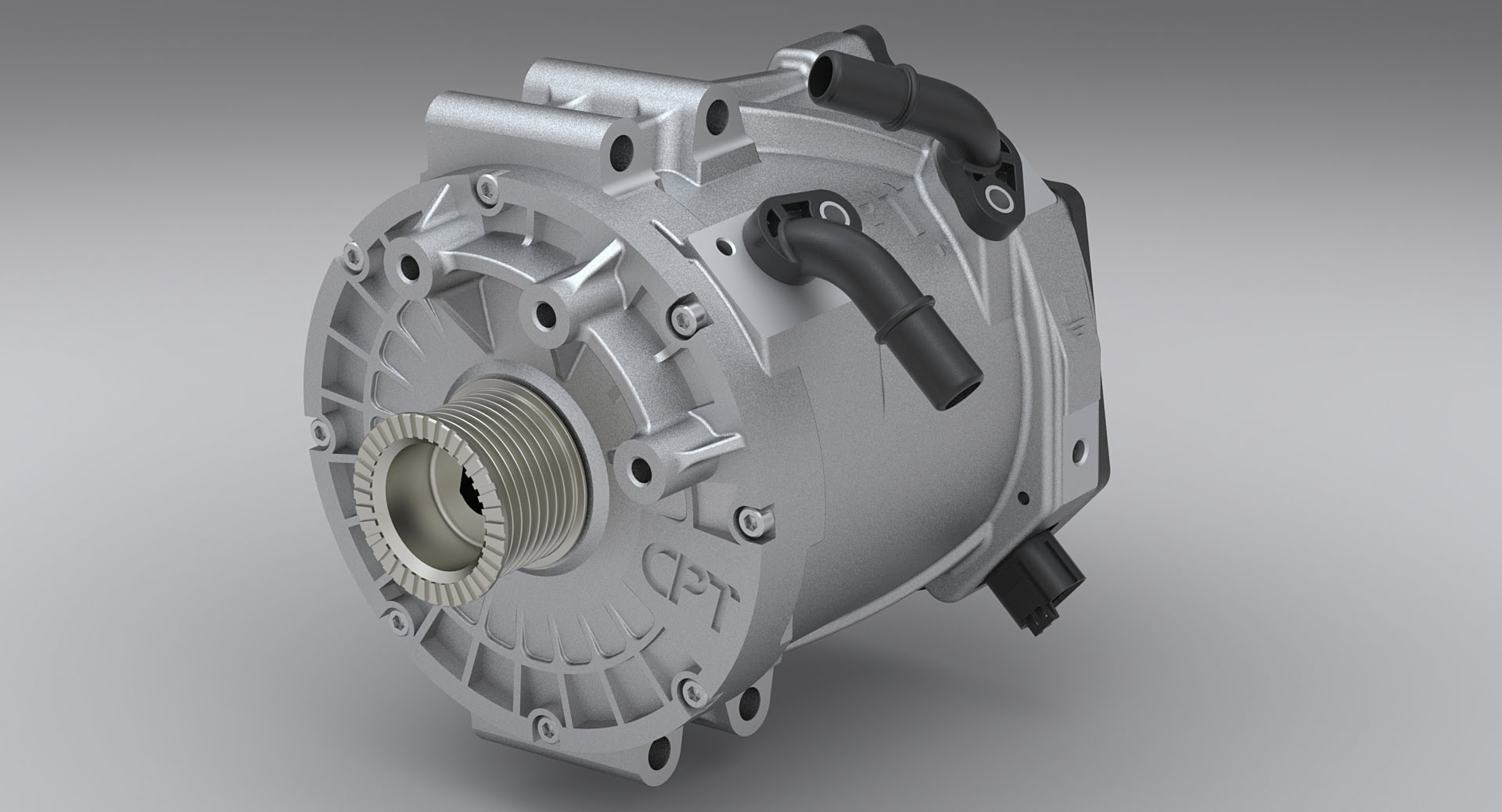


0 thoughts on “How To Reduce Construction Dust”